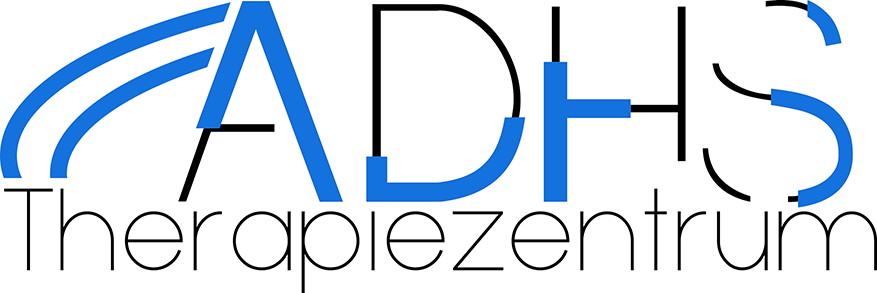[1] Grobe, T. G., Bitzer, E. M. & Schwartz, F. M. (2013). BARMER GEK Arztreport 2013. Schwerpunkt ADHS. In BARMER GEK (Hrsg.), Schriftenreihe zur Gesundheitsanalyse, Band 18. Siegburg: Asgard-Verlagservice GmbH.
[2] Walk, L. (2011). Bewegung formt das Gehirn. Lernrelevante Erkenntnisse der Gehirnforschung. DIE Zeitschrift, 1, 27-29.
[3] Eliot, L. (2002). Was geht da drinnen vor? Die Gehirnentwicklung in den ersten fünf Lebensjahren. Berlin: Berlin Verlag.
[4] Ratey, J. R. & Hagemann, E. (2009). Superfaktor Bewegung. Freiburg: VAK.
[5] Kubesch, S. (2007). Das bewegte Gehirn. Schorndorf: Hofmann.
[6] Peter S. Eriksson, P. S., Perfilieva, E., Björk-Erikssom, T., Alborn, A.-M., Nordborg, C., Peterson, D. A. & Gage, F. H. (1998). Neurogenesis in the adult human hippocampus. Nature Medicine, 11, 1313-1317.
[7] Buchner, A. & Brandt, M. (2002). Gedächtniskonzeptionen und Wissensrepräsentationen. In J. Müsseler & W. Prinz (Hrsg.), Allgemeine Psychologie (S. 493-534). Heidelberg: Spektrum Akademischer Verlag.
[8] Spitzer, M. (2002). Lernen: Gehirnforschung und die Schule des Lebens. Heidelberg: Spektrum Akademischer Verlag.
[9] Ameri, A. (2001). Neue Nervenzellen in alten Gehirnen. Eine mögliche Rolle bei Reparatur und Lernprozessen. Extracta Psychiatrica, 15, 12–16.
[10] Meeusen, R. & De Meirleir, K. (1995). Exercise and brain neurotransmission. Sports Medicine, 20, 160–188.
[11] Hillman, C. H., Pontifex, M. B., Raine, L. B., Castelli, D. M., Hall, E. E. & Kramer, A. F. (2009a). The effect of acute treadmill walking on cognitive control and academic achievement in preadolescent children. Neuroscience, 159, 1044–1054.
[12] Budde, H. u.a. (2008): Acute coordinative exercise improves attentional performance in adolescents. Neuroscience Letters, 441, 219–223.
[13] Kubesch, S. & Walk, L. (2009). Körperliches und kognitives Training exekutiver Funktionen in Kindergarten und Schule. Sportwissenschaft, 4, 309–317.
[14] Hillman, C.H. (2009b). Aerobic fitness and cognitive development: Event-related brain potential and task performance indices of executive control in preadolescent children. Developmental Psychology, 45, 114–129.
[15] Stroth, S., Kubesch, S., Dieterle, K., Ruchsiw, M., Heim, R. & Kiefer, M. (2009). Physical fitness, but not acute exercise modulates event-related potential indices for executive control in healthy adolescents. Brain Research, 269, 114–124.
[16] Austermann, J. & Muzuna, D. J. (2014). TURNING ATTENTION TO ADHD. U.S. MEDICATION TRENDS for ATTENTION DEFICIT HYPERACTIVITY DISORDER. Express Scripts Report.
[17] Krause, K.-H., Dresel, S. & Krause, J. (2000). Neurobiologie der Aufmerksamkeitsdefizit-/ Hyperaktivitätsstörung. Psycho, 26, 199-208.
[18] Clark, C. R., Geffen, G. M. & Geffen, L. B. (1987). Catecholamines and attention I: Animal and clinical studies. Neuroscience & Biobehavioral Reviews, 11, 341-352.
[19] Crook, W.I. (1975). Can your child read? Is he hyperactive? Jackson, Tennessee: Pedicenter Press.
[20] Castellanos, F. X., Elia, J., Kruesi, M. J., Gulotta, C. S., Mefford, I. N., Potter, W. Z., Ritchie, G. F. & Rapoport, J. L. (1994). Cerebrospinal fluid monoamine metabolites in boys with attention-deficit hyperactivity disorder. Psychiatry Research, 52, 305-316.
[21] Denkla, M. B. (1996). Biological correlates of learning and attention: What is relevant to learning disability and attention-deficit hyperactivity disorder? , 17, 114-119.
[22] Carter, C.S., Krener, P., Chaderjian, M., Northcutt, C., Wolfe, V. (1995). Asymmetrical visual-spatial attentional performance in ADHD: Evidence for a right hemisphere deficit. Biological Psychiatry, 37, 789-797.
[23] Garcia-Sanchez, C., Estevez-Gonzalez, A., Suarez-Romero, E. & Junque, C. (1997). Right hemisphere dysfunction in subjects with attention-deficit disorder with and without hyperactivity. Journal of Child Neurology, 12, 107-115.
[24] Chabot, R. J., Merkin, H., Wood, L. M., Davenport, T. L. & Serfontein, G. (1996). Sensitivity and specificity of QEEG in children with attention deficit or specific development learning disorders. Clinical Electroencephalography, 27, 26-34.
[25] Kuperman, S., Johnson, B., Arndt, S., Lindgren, S. & Wolraich, M. (1996). Quantitative EEG differences in a nonclinical sample of children with ADHD and undifferentiated ADD. Journal of the American Academy of Child and Adolescent Psychiatry, 35, 1009-1017.
[26] Monastra, V. J., Lubar, J. F., Linden, M., vanDeusen, P., Green, G., Wing, W., Phillips, A. & Fenger, T.N. (1999). Assessing attention deficit hyperactivity disorder via quantitative electroencephalography: an initial validation study. Neuropsychology, 13, 424-433.
[27] Brandeis, D., van Leeuwen, T. H., Rubia, K., Vitacco, D., Steger, J., Pascual-Marqui, R. D. & Steinhausen, H.C. (1998). Neuroelectric mapping reveals precursor of stop failures in children with attention deficits. Behavioural Brain Research, 94, 111-125.
[28] Lahat, E., Avital, E., Barr, J., Berkovitch, M., Arlazoroff, A., Aladjem, M. (1995). BAEP studies in children with attention deficit disorder. Developmental Medicine & Child Neurology, 37, 119-123.
[29] Rubia, K., Overmeyer, S., Taylor, E., Brammer, M., Williams, S. C., Simmons, A. & Bullmore, E. T. (1999). Hypofrontality in attention deficit hyperactivity disorder during higher-order motor control: a study with functional MRI. American Journal of Psychiatry, 156, 891-896.
[30] Bush, G., Frazier, J.A., Rauch, S.L., Seidman, L.J., Whalen, P.J., Jenike, M.A., Rosen, B.R., Biederman, J. (1999). Anterior cingulate cortex dysfunction in attention-deficit/hyperactivity disorder revealed by fMRI and the Counting Stroop. Biological Psychiatry, 45, 1542-1552.
[31] Vaidya, C. J., Austin, G., Kirkorian, G., Ridlehuber, H. W., Desmond, J. E., Glover, G. H. & Gabrieli, J. D. (1998). Selective effects of methylphenidate in attention deficit hyperactivity disorder: a functional magnetic resonance study. Proceedings of the National Academy of Sciences, 95, 14494-14499.
